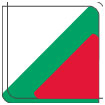FILE PREPARATION
PDF’s are the best format for you to provide your artwork, please make sure your images are at least 300dpi and all colours are correct.
We accept artwork created in any of the following software packages:
- Adobe InDesign
- Adobe Illustrator
- Adobe Photoshop
- Please be aware that files from the Microsoft Office suite of programs (Word, PowerPoint, Excel and Publisher) are not designed for commercial printing.
PDF Creation
When creating your PDF to submit for print please use a recognised PDF-maker such as Acrobat Distiller tomake your PDF. Using a design package’s own PDF maker may result in your job being rejected.Always save as a High Quality or Print Quality PDF.If using Acrobat Distiller then choose PDF/X-1a:2001 from the drop-down list.
When creating your PDF please embed all fonts.If your job has a bleed please ensure, you choose a large enough PDF page size to accommodate the bleed
i.e. if you design an A6 flyer with a bleed, make your PDF page size A5.
Create your PDF with crop marks if possible.Supply all files as 1up as we will deal with the imposition at this end.
Please always view your PDF with Output Preview open before submitting it for print as this gives the mostaccurate representation of how the file will look once printed, and may flag up errors that aren’t visiblewithout Output Preview open.
BLEED & CROP MARKS
Please set up the page size of your document at the exact size that you wish your job to print. Do not supply artwork floating on a larger page or include multiple items on the same page.
Bleed:
Ensure all jobs have 3mm bleed ifrequired.Bleed is required when images, colour ortext go right to the edge of your page. Tocreate a bleed simply extend yourimage(s), colour(s) or text 3mm over theedge of the page.
Crop Marks
Show us the edge of your work so we know exactly where to trim it.Please always make your PDFwithout crop marks.
Please Note: If making a PDF for print,please make your PDF page size largeenough to incorporate the bleed i.e. ifyour flyer is A5 with bleed, make yourPDF page size A4, etc.


























